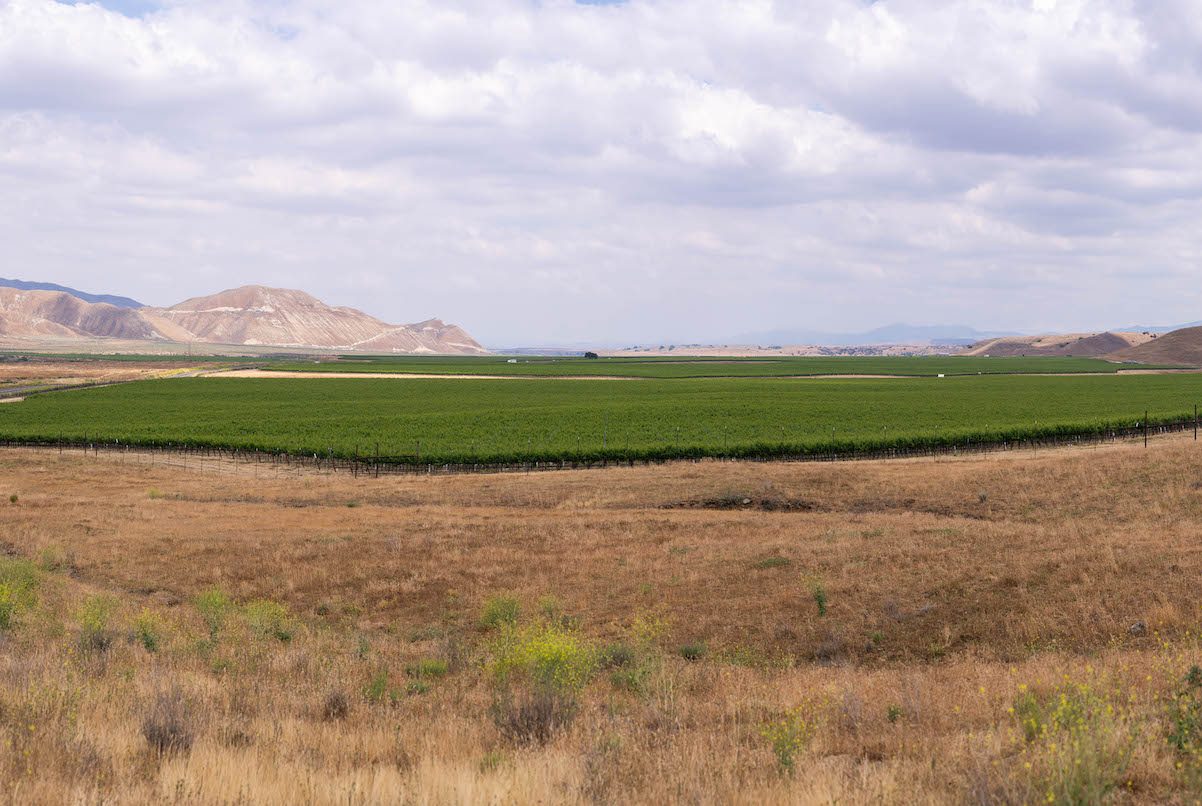Santa Barbara County Supervisors Decide Cuyama Groundwater Basin Is Half Empty, not Half Full

With a major groundwater basin in the Cuyama Valley identified as one of the 21 most critically over-drafted basins in the state, the Santa Barbara supervisors — by a 3-2 vote — concluded it made no sense to grant the permits necessary for an 850-acre wine-grape operation owned by Brodiaea Inc., a subsidiary of Harvard University’s investment arm, to carve out three major frost ponds to better keep their grapes alive during cold winter snaps.
Each of the three ponds proposed by the North Fork Ranch would occupy five acres, be 27 feet deep, and be allowed to use no more than 103 acre-feet — combined — per year. Led by Supervisor Das Williams, county supervisors argued against allowing any further overdraft of a basin already so imperiled that water users there will be required by the state to gradually cut back usage by 60 percent.
At issue, however, is whether the wells pumped by the North Fork Ranch since it first planted grapes in 2012 is drawing from that at-risk basin or an adjoining one. Also at issue is whether these basins are geologically connected or not. If they were, pumping in one basin could adversely affect property owners whose lands lie above the others.
At Tuesday’s hearing, scads of farmers and ranchers from the Cuyama Valley showed up to testify their way of life — and their water supply — is threatened by what they suggested is in reality a water-guzzling real estate “boondoggle” designed to eventually sprout ranchettes rather than grapes and enrich Harvard University at the expense of the environment.
Lining up just as passionately on the other side were members of the county’s Agriculture Advisory Commission, the county Farm Bureau, and even the California Farm Bureau, all of whom expressed great alarm that county planners would become empowered — “a slippery slope,” they called it — to tell farmers how to conduct their business.
While the debate was fierce and formidable on both sides, the facts were anything but clear. While central portions of the Cuyama groundwater basin have been aggressively strip-mined over the years — now especially so by two large-scale carrot farms — the North Fork Ranch overlays the northwestern portion of the basin. Foes of the project point out that water levels have dropped 100 feet since North Fork began drilling. Supporters insist the basin is “fairly stable” and cite the report where that language was used.
The procedural history is just as murky. When North Fork first proposed the first basins in 2017, it resisted having to prepare an environmental impact report. When the report concluded the project’s impacts could be mitigated to an acceptable level — and county planners recommended approval — they changed their tune. But after the Planning Commission rejected the proposal this spring — citing unreliable water supply — North Fork appealed to the county supervisors. When the supervisors heard the appeal this Tuesday, county planners had switched sides, this time arguing there was substantial evidence in the record to support the denial.
The Cuyama Valley is one of only two water districts in the state to get all its water from its groundwater basins. The failing health of its central basin is now the subject of intense state scrutiny and regulatory oversight, and water anywhere in the Cuyama Valley has become such an intensely polarized issue that residents are launching a boycott against the carrot companies there.
It’s expected that North Fork Ranch will challenge the supervisors’ vote in court. Supervisors Joan Hartmann and Laura Capps both joined with Williams in rejecting the appeal by North Fork Ranch. Supervisors Bob Nelson and Steve Lavagnino sided with the company, but only after Lavagnino came up short on a proposed compromise to reduce the number of frost ponds from three to two. Just last week, the supervisors heard a report that 80 percent of the water used in Santa Barbara County is extracted from underground aquifers. With warming trends inexorably on the rise, they were also told, water planners need to expect to make do with a 10 percent drop in precipitation.



